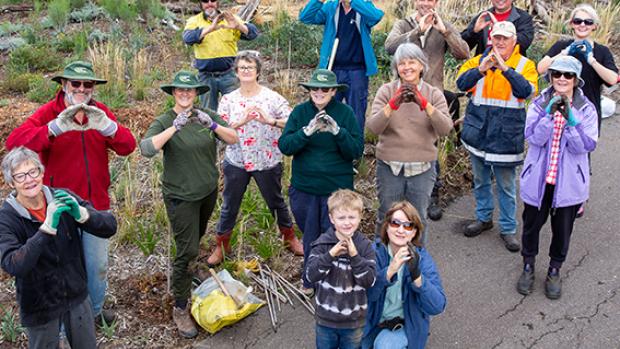Loading
Nature Network launches Bendigo Blueprint for Action

Eight local conservation and community groups have joined forces to focus their actions on identifying ecological threats and restoring key ecosystems across eastern and southern Bendigo.
The Nature Network was officially formed on July 31 and is made up of Axe Creek Landcare, Longlea and District Landcare, Mandurang Landcare, Northern Bendigo Landcare, FOSSALs (Friends of Strathfieldsaye Streams and Land), Junortoun Community Action Group, Friends of the Whipstick, and Ironbark Gully Friends Landcare.
The Network marked its launch by releasing its Blueprint for Action, highlighting priorities aimed at restoring ecosystems and connecting the community to the landscape.
Nature Network Facilitator Kristie Smith from the North Central Catchment Management Authority (CMA) said most of the key threats to the region’s natural assets stemmed from urbanisation.
“There are also issues such as ecology fragmentation, waterway changes, soil and habitat degradation, clearing of mature trees, climate change, and competition for resources,” she said.
“On top of that, we’ve seen humans disconnect from nature and a sense of helplessness develop across the region, which is something Nature Network wants to overcome.
“Nature Network brings eight smaller groups together, which means strength in numbers as well as all the benefits of sharing resources and skills.
“And the blueprint gives a clear plan of the projects and activities we believe will help restore the box ironbark forests and grassy woodlands that are under increased pressure.”
Ecologist, author, and nature photographer Chris Tzaros was the special guest speaker at the Network launch. He said the conservation priorities to the south and east of Bendigo were clear.
“Lowlands and gullies, such as creeks and drainage lines, have the most fertile and diverse habitats and are often overlooked,” he said.
“Another priority is mature trees, which serve a whole range of ecological functions. They need to be protected and supported.
“Mammals, birds, reptiles, frogs, and fungi also rely on habitats structurally complex ground layers such as fallen branches, leaf litter, and rocks.
“Historically, this kind of habitat was cleared, but revegetating complex understories, particularly on private land, to achieve connectivity and to support mature trees, needs to be a focus.”
The blueprint identifies three network-scale projects in the area to create connectivity and increase community engagement.
They include:
Emu Creek, Sheepwash Creek, Splitters Creek and Axe Creek Corridor to the Campaspe River.
Continue to revegetate the Axe Creek corridor to the Campaspe River, particularly where private property adjoins the frontage.
Link Wellsford Forest to Whipstick National Park Forest
Establish a corridor from Wellsford Forest to the Lions Park Reserve at Bendigo Creek via Back Creek at Ascot.
Link the southern end of Bendigo Creek catchment (Big Hill) to northern section in Greater Bendigo (Huntly).
Establish a network of corridors that combine both rural and urban groups.
Local environment legend Ken Beasley will head Nature Network, with support from an experienced and passionate Board and a raft of volunteers across the region.
